Spotlight on Pete Kiehart
Dec 2, 2012
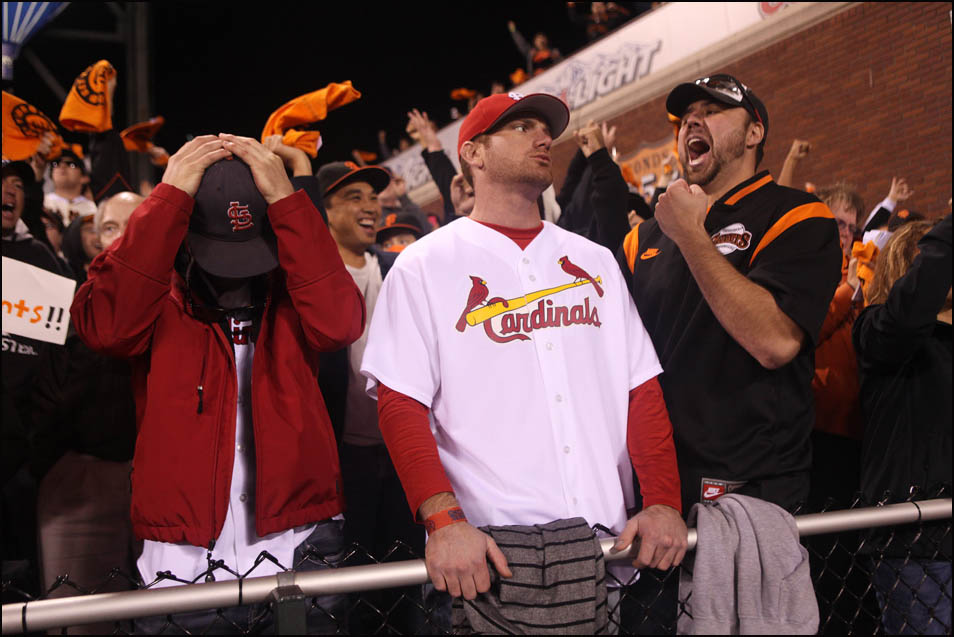
TID:
What a great picture, Pete! Please tell us a little of the backstory of the image.
PETE:
Hi Ross, thanks for having me. It feels like no matter where I go in photography, I can't escape you. (Ross and Logan, the co-creators of TID, were two of my earliest mentors in photography.)
I made this photo at Game 6 of the 2012 National League Championship Series. I arrived rather late to the story of the Giants making the playoffs - I had been traveling and working at the Eddie Adams Workshop at the beginning of October. The day before Game 1 of the NLCS, I came back to San Francisco and worked through the end of the World Series. It was a huge story for us as a publication. When I wasn't shooting, I was editing a slew of special products (my primary function at the paper is as a picture editor).
Our director of photography, Judy Walgren, assigned me to shoot features of fans at Game 2 of the NLCS, and subsequently assigned me the same beat for the rest of the home playoff games.
TID:
How did you prepare for this shoot, or what did you do to put yourself in place to make this happen?
PETE:
I prepared to cover the playoffs by reviewing the work that our staff and wires had produced of the earlier games. This research was both to get ideas and to avoid duplicating efforts and creating visual redundancies. As an editor, part of my responsibility is to think beyond the single game - about making our body of work tell the overall story of the playoffs and the season - so I wanted to make sure we had good visual variety through each presentation.
For each game, we sent as many as 6 photographers and an on-site editor to the stadium itself, plus 1-2 editors at the paper, and, for potential elimination games, we assigned photographers to local watch parties and sites that we thought might see street celebrations or rioting.
The image we're discussing is from the second game I was assigned to. My credential allowed me to go anywhere the fans could go, as well as on the field during batting practice and after the games. Aside from the obvious game-day preparation (arriving really early, checking my gear, etc.), my most valuable prep came from the previous game; during that first trip to AT&T Park, I noted how the light changed as the sun set, searched out places to shoot from that afforded good vantage points without getting in the way of spectators, and planned when and how to move around the stadium.
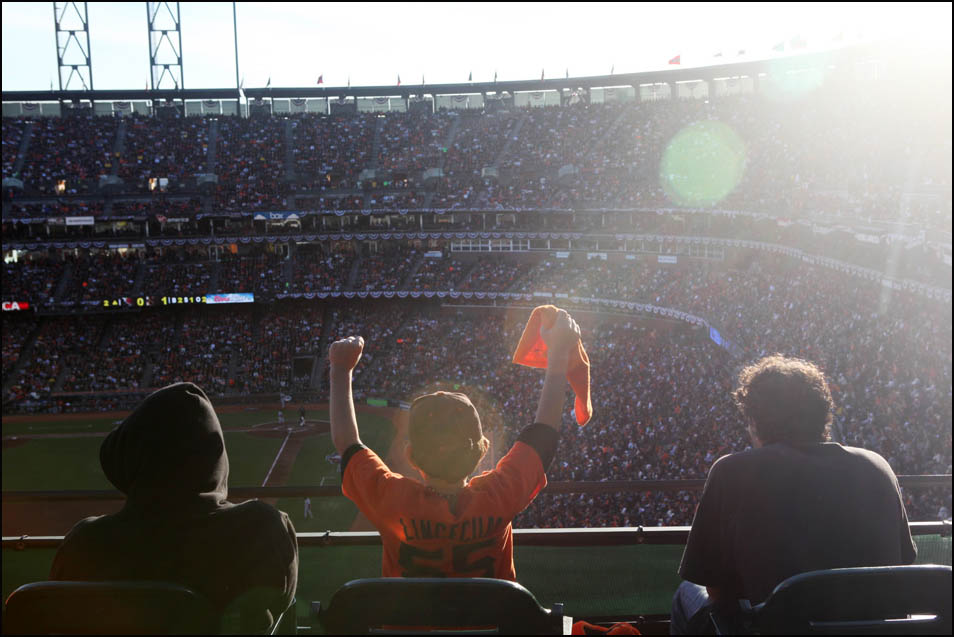
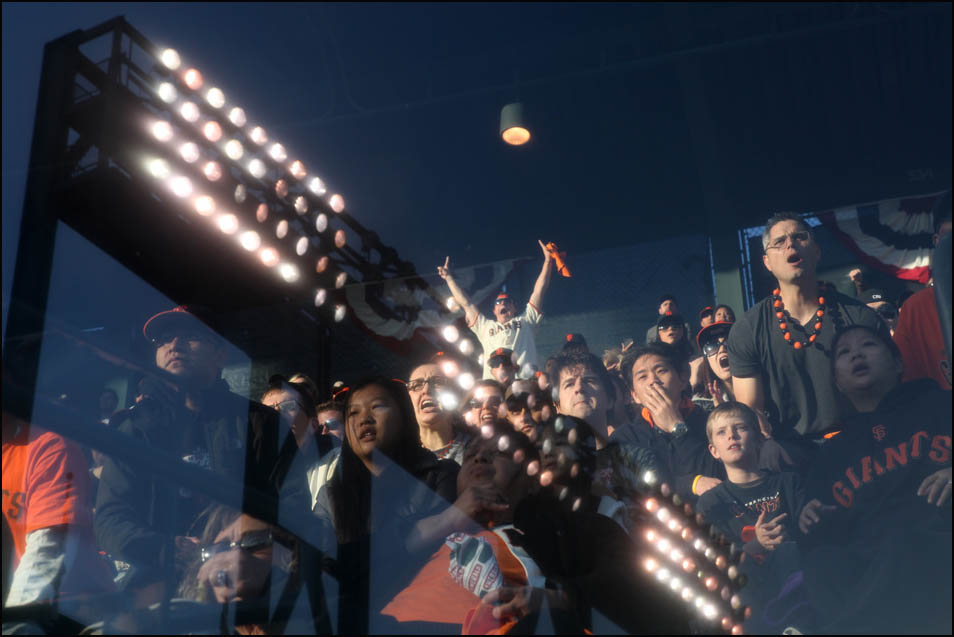
TID:
What challenges did you encounter while working to make this image?
PETE:
The main challenge was finding places to shoot from where you could see people's faces without blocking their view. It's obviously easy to stand behind people and shoot towards the field, but then you don't get any expression. There are also fire/security/evacuation concerns that make park personnel antsy when you stand in aisles. This photo was made in one of the spots I came across where the crowd was slightly higher than the walkway I was standing on. They could see over me, but they were not so high that I was shooting the bottoms of their chins.
Something I've struggled with since a young age is shyness, so ironically I received the one in-stadium assignment that required I interact with people. Especially in public settings, I sometimes find myself trending towards aesthetics-driven photos that require minimal interaction with people. This begins to result in monotonous photos that lack the visual variety I discussed earlier, and worse, produces photos that lack moments and fail to reveal anything to the reader. To combat this, if I go through 2-3 situations without having to open my notebook, I force myself to make a picture that requires that I introduce myself and get caption information.
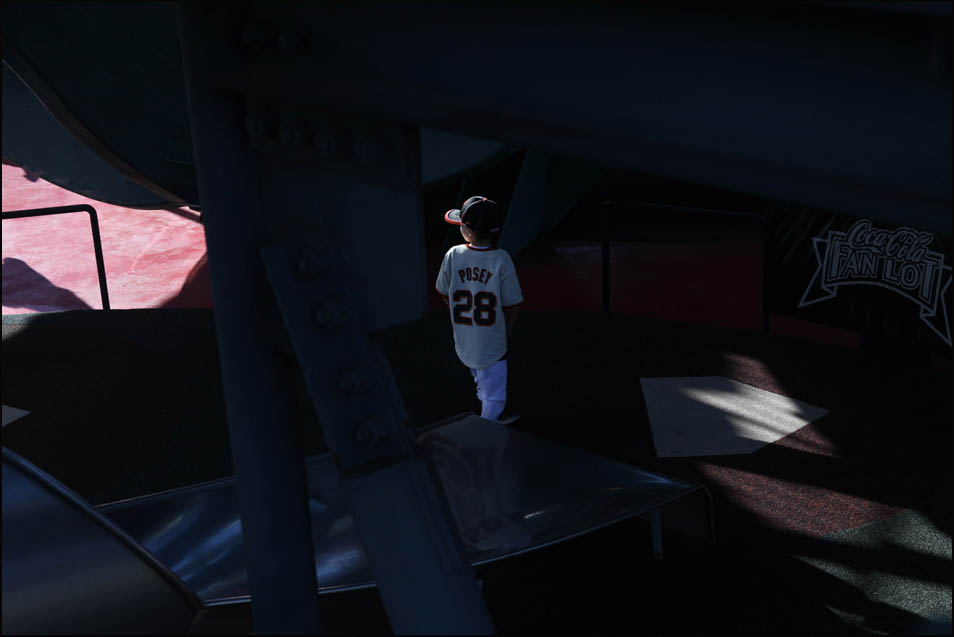
TID:
You describe yourself as shy and drawn to limited interaction with people. However, having known you for years, I would not describe you in any way as shy. Why do you feel you're shy shooting, as opposed to your personal life? Personally, I'm don't feel I'm shy at all when shooting, but in "everyday life" I am much more reserved. I think that's really interesting.
PETE:
Yeah, it's amazing what a few shots of rye will do for your confidence, isn't it?
Actually, I think I'm fairly shy outside of my professional life too. There's not really any rational reason for it, that I can think of. Like everyone, I get much more comfortable and confident as I get to know someone - I've known you guys for years now - that's probably why you see my more outgoing side.
I wish I had some great advice to overcoming shyness, but I'm the wrong guy for that. All I can say is that I don't think photojournalists can afford to act shy, even if we feel that way. There's an amazing scene in the first chapter of All The President's Men that illustrates this really well. Bob Woodward goes to court for a preliminary hearing for the five burglars, and he notices a man who seems out of place sitting in the gallery. He sits down next to him and for the next page and a half doggedly asks the guy questions, despite being asked to stop several times. Just because the guy looked out of place! That's all it took, and Woodward is following this guy around, just methodically trying to develop the story. It's a really beautiful description of the craft of journalism at its apogee. Go read it, it's excerpted here. I try to remember that determination whenever I'm nervous about approaching someone.
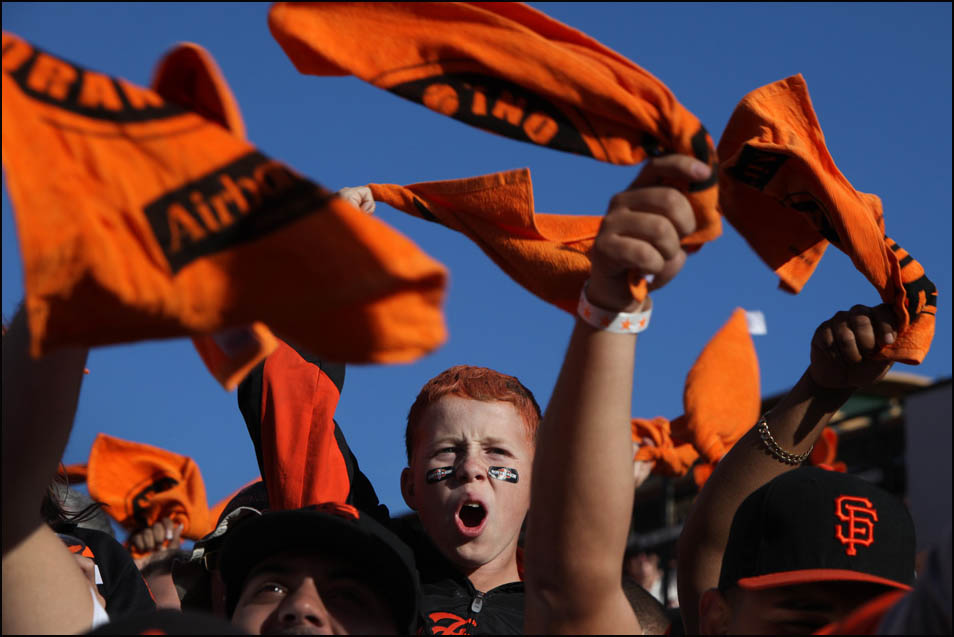
TID:
I think this is really fascinating that if you go 2-3 situations without having to write a name in your notebook, then you force yourself to do so. Are there any other mental drills like this that you do to improve your shooting?
PETE:
I don't know if you would call them "drills" per se, but a few things people have said to me over the years have stayed constantly in the back of my head while I'm shooting. I like shooting with prime lenses, but I end up shooting with zooms a lot because the fastest lenses we have at The Chronicle are zooms. There are a lot of drawbacks to zooms, including a lot of technical stuff with the optics, but more than anything they make you lazy. I remember Joe Weiss, who was the DOP in Durham when I interned there (and went on to create Soundslides), tearing apart one of my shoots once while he was editing me. He described my process (picture a goateed man, gesticulating wildly here) "Okay, to tell the story you need THAT and THAT, zoom out, DONE." He was right. Instead of moving around and thinking about my composition, I would pretty much identify things that told the story, zoom until they fit in the frame, and press the shutter. To counter this tendency, I’ll assess a situation and ask myself what prime lens I would want to make the photo I am envisioning. Then I use the markings on the zoom lens (24mm, 35mm, 50mm, etc) to pick a focal length before I look through the viewfinder. I basically say to myself, “I would shoot this with a 35mm.” Then set the lens. Then compose.
One other mental trick I use when I'm doing newspaper work: if I make a frame I'm happy with, I look at the image on the back of the camera and try to write a caption for it in my head. This goes a little beyond making sure I have the names of the subjects, and when I remember to do this, it leads to more complete caption information. During Game 2 of the World Series, I photographed a Navy lieutenant stoically standing among a crowd of Giants fans who were going wild after a double play. In my rush, I failed to ask him why he wasn't cheering. Was he a Detroit fan? Were his thoughts elsewhere? It would've been great to explain in the caption, and it might have led to another story in its own right.
TID:
Now onto the moment. Can you talk about the moments leading up to the picture and also the actual moment?
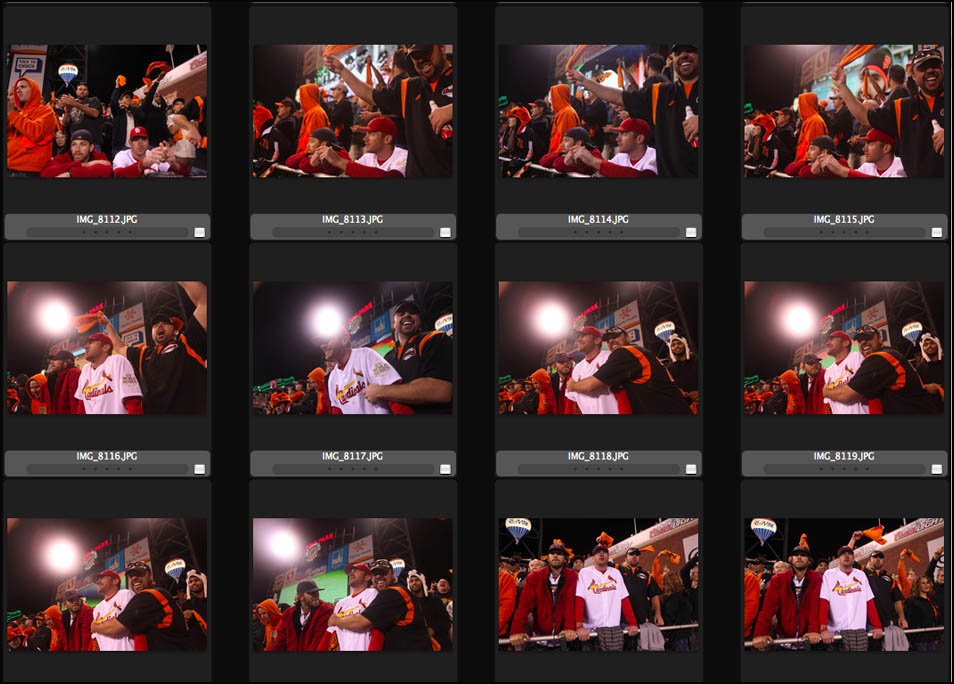
PETE:
I was tag-teaming the fans assignment for this game with one of our freelancers, Beck Diefenbach. When the sun went down, probably around the 3rd or 4th inning, he went to our station in the photo workroom to transmit, and I kept shooting. As soon as he was done, I went in to transmit.
A common mantra in photojournalism is "don't preconceive." I've never really agreed with this. During downtime, I am always envisioning possible pictures. At the previous game, I didn't really make a successful photo of a Cardinals fan, so this was something I was looking for. By the time I got done transmitting my first set of photos, the game was solidly in the hands of the Giants and starting to wind down. Because I was pressed for time - it was probably the bottom of the 7th or top of the 8th at this point, I headed to the seats of some Giants fans I had met earlier. They were rowdy and colorfully dressed, and I wouldn 't have to spend precious time explaining myself to them - I would be able to start photographing them right away.
I stayed with them for only a few minutes. Despite having already spent time with them, they were very camera-aware and wouldn't stop reacting to the camera, so I moved on. I noticed two Cardinals fans sitting in the front row of the bleachers adjacent to my section. Back to preconceiving - I had an idea that I would make a photo of a stoic, depressed Cardinals fan, with the mayhem and jubilation of the Giants transpiring around them. I hustled over to them, and, as you can see in the first contact sheet, I tried to make that picture with the first frame. I was disappointed with how it looked.

As happens 99% of time with my "preconceptions," the image looked nothing like what I had imagined. That's when I realized a few things in rapid succession:
A) The two Cardinals fans were with a friend.
B) The friend was in Giants gear.
C) The story I was trying to tell by photographing "two fans with the huge crowd" could be simplified to "two fans and their friend"
I made a few more frames and then quickly introduced myself - explaining where I was from, what I was doing, how I'd appreciate it if they'd ignore me, etc. I photographed them until the end of the game, but this frame is actually from near the beginning of my time with them. After I made this series of frames, I was reasonably certain I had a usable moment (things were moving too quickly to really review my images). I tried a couple different approaches (I included another Giants fan to the left, for instance) but mostly I stuck with my composition and let the moments happen in the frame.
TID:
What surprised you about the moment?
PETE:
Rob, the Giants fan, was obviously very animated in his reaction. I don't know if "surprising" is the best word to describe this, maybe "hilarious" is better. Rob was absolutely merciless in his celebration, and I was a little worried things might get violent as I was shooting. In the end, it seemed like everyone was good-natured.
TID:
What did you not accomplish that you wish you had (for next time you're in that situation)?
PETE:
That's an interesting question. I am pretty pleased with this individual image, but wonder how my body of work as a whole could have been stronger. I photographed 5 games, and by the 5th I felt a little like I was running out of ideas. I actually brought a little gorillapod with me to the last game I shot (Game 2 of the World Series), and tried to do some stuff of blurred fans entering the stadium, cheering, etc. It didn't turn out the way I wanted.
TID:
In conclusion, what advice do you have for photographers?
PETE:
Give back whenever and whatever you can to the photo community. Any success I've achieved I owe to the generosity and kindness of my peers.

:::BIO:::

(photo by Lauren Steel)
Pete Kiehart lives in San Francisco, California. He is currently a visuals editor and photographer for The San Francisco Chronicle. In his current role at the Chronicle, Pete is responsible for editing photos for print and online, and for shooting still and video assignments on a variety of topics.
In the past 5 years he has worked as a photographer, editor, video producer, production assistant, writer and designer. Pete has also maintained a close relationship with the Eddie Adams Workshop since attending the Sixteenth Workshop as the High School Photographer of the Year. He has supported the workshop in numerous capacities including as a member of the faculty in 2010.
Pete holds a Bachelor’s Degree in Public Policy Studies from Duke University. Before transferring to Duke, he spent two years studying at Ohio University’s School of Visual Communication.
When not working with photography, Pete enjoys riding bikes and traveling. He is available for freelance work and projects on a limited basis.
You can see more of his work here:
In-need-of-an-update-Portfolio: http://www.petekiehart.com
Workshop-you-should-apply-to: Eddie Adams Workshop